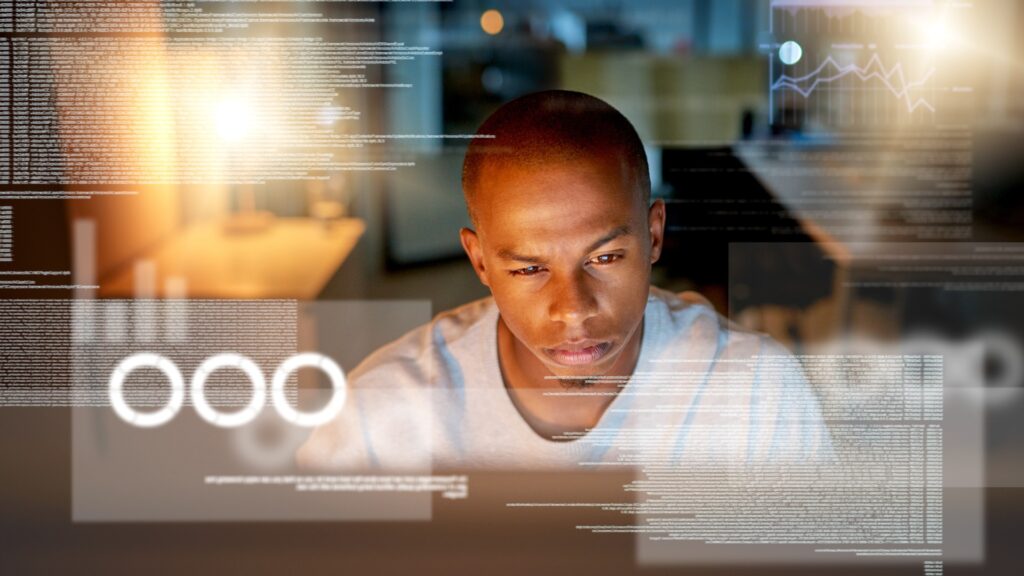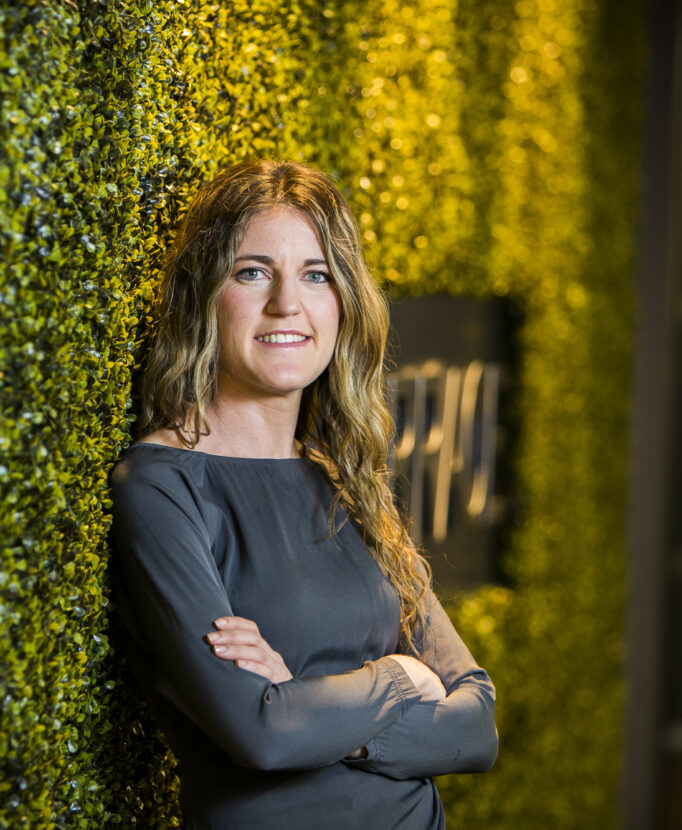Celeb Shot
AI & Flow State Workplace
Futurist Nikki Greenberg guides readers through a revolutionary working approach: leveraging the physical, cognitive, and digital realms to create an environment that fosters peak performance and innovation. It’s called the Flow State Workplace.

Distractions impose a significant economic burden on American enterprises, amounting to approximately $1 trillion annually with the average employee able to concentrate on a given task for merely three minutes and five seconds before encountering an interruption or transitioning to another activity. The absence of an uninterrupted work environment hinders employees’ ability to engage in profound and meaningful work. In examining a tangible way to overcome this concern, I coined the concept of the Flow State Workplace aimed at cultivating an environment conducive to achieving a state of ‘flow,’ akin to being fully immersed or ‘in the zone.’ This state is characterized by heightened creativity and efficiency, where tasks are executed with a sense of ease and excellence.
The architecture of a Flow State Workplace is predicated upon three foundational elements: the physical, cognitive, and digital spaces, each playing a pivotal role in facilitating optimal performance.
Drawing from my extensive experience as an architect involved in multi-decadal transformative projects, and as a former head of technology strategy at a major Australian investment management firm, I have witnessed firsthand the criticality of strategic planning, multidisciplinary collaboration, and a forward-thinking approach in creating environments that foster innovation and high-performance. Within these roles, I prioritized the establishment of a work environment that enabled deep, creative thinking.
Physical Space
The physical dimension of the workplace, whether it be a corporate office, home setting, or a third space like a café, significantly influences our capacity for productive work. The frustration of interruptions by colleagues is a leading cause of dissatisfaction amongst office workers as having to expend additional cognitive effort to block out the noise of office chatter, phone calls and colleagues’ virtual meetings takes its toll on an ability to engage in deep work. Although it is clear in the research, it is not spoken about enough — the open-plan office is terrible!
There are many studies that show the relationship between environmental design and a person’s mindset. In such a way, we are able to use these hacks to influence a person’s ability to do better and more purposeful work. Here are some examples:
- Color theory: Color does not need to be static. Smart lights such as the Hue light strip (which I have in my home) can be used to adjust the color of the environment and impact on mood. A warm yellow, orange, or red environment encouraged creative thinking, while cool blue light enhances deep, focused work.
- Clean air: Studies by the International WELL Building Institute have shown that clean air leads to an 11% productivity increase. A 50% increase in cognitive ability can be achieved through well-ventilated, low pollutant environments
- Plants: The UK Green Building Council reported that surrounding workers with plants leads to a 15% increase in productivity. It is my believe, is that this increase is due to improved wellness and mood.
Cognitive Space
Every time a person is interrupted, it takes them 20 minutes to regain their focus. With the goal of establishing a mental state of mind that’s supportive to high-value work, strategies to minimize interruptions are crucial, as each interruption can significantly derail an individual’s ability to re-enter a flow state. Moreover, it has been found time and again, that a happy individual is a productive individual. Decluttering is one of the most impactful things an organization can and should do. When a person has hundreds of daily emails, a dense calendar of meetings, and a plethora of low-value tasks to check off in a day, there is little space for creative, deep work. People should have the chance to get bored as this has been shown to lead to greater creativity. The way to optimize the cognitive space, starts with a culture of decluttering.
Digital Space & AI
A constant influx of digital notifications and interruptions poses a significant challenge to maintaining flow state. The imperative to answer emails, chat messages, texts, calls, meetings notifications, software update reminders, and more are constant annoyances. The establishment of digital etiquette protocols and the reduction of digital friction are essential strategies in preserving the sanctity of the flow state.
Switching between digital platforms also disrupts flow state. Many people have devised ‘work around’ solutions to technological shortcomings and glitches, underscoring the pressing need for more seamless integrations across digital tools. The digital tools that organizations use to do work need to promote flow state, not disrupt it.
In this context, Artificial Intelligence (AI), and more specifically, generative AI, emerges as a formidable ally:
- Analytical Assessment: The application of AI to analyze team dynamics epitomizes the adage “what gets measured gets done.” It behooves managers to employ AI not only as a diagnostic tool to gain insights into their team’s practice but also as a means to identify and implement automated solutions aimed at reducing operational friction.
- Task Automation: AI’s capability extends to automating and streamlining tasks such as summarizing meetings to remove the need for universal attendance; drafting correspondence; or condensing extensive reports. It can analyze workflows and systems, recommending between ways of operating through an analytical assessment.
- Kaizen: Adhering to the principles of continuous improvement or ‘Kaizen,’ AI can revolutionize workplace efficiency by not just automating mundane, repetitive tasks, but becoming more efficient and effective overtime. This, in turn, liberates individuals to dedicate their intellectual capacities to more nuanced and strategic endeavors.
For organizations striving for excellence, integrating human dynamics with technology is key. The Flow State Workplace orchestrates an environment that cultivates deep, immersive work, empowering individuals to excel. When freed from routine tasks by automation, employees engage more deeply and effectively in their roles and with each other. AI serves as a pivotal tool in this ecosystem, streamlining processes and fostering an evolving workspace where innovation and human ingenuity flourish side by side.
Events aren’t easy, but working with WSB is. WSB works with thousands of respected influencers, thought leaders, and speakers each year and our experienced sales team is committed to the success of your event. For more futurist speaker ideas, please contact us.
